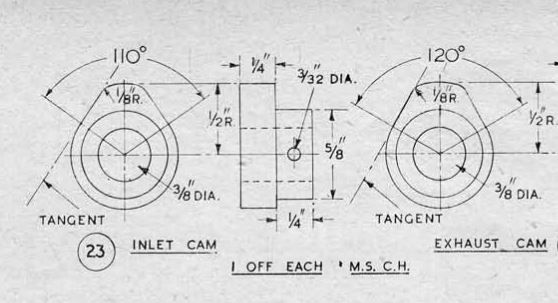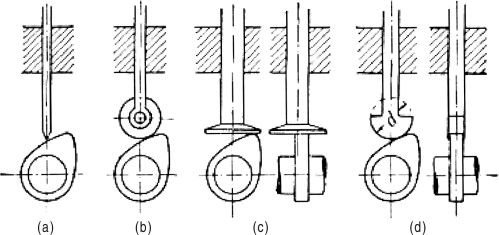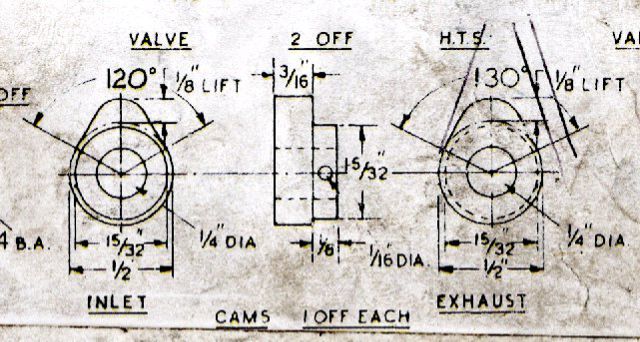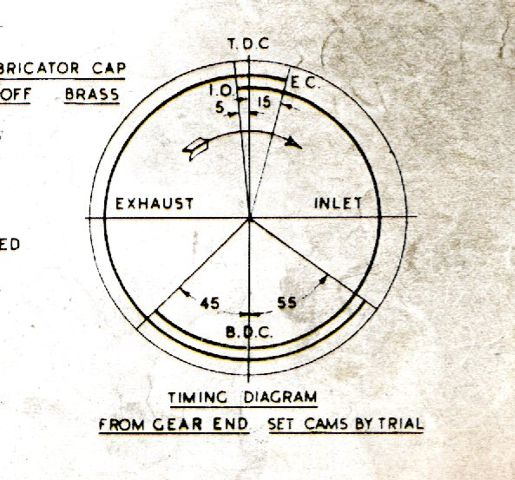Looking further at your timing diagram in the OP, is is very surprising to see that kind of valve overlap on a low-revving, low-performance stationary engine. According to this chart, your Centaur has more valve overlap than ETW's Kiwi engine, which has 10 degrees inlet lead and 20 degrees exhaust lag vs your Centaur chart showing 15 and 20 respectively. That's according to the Kiwi drawings I have sitting under the bench awaiting the day castings become affordable.
This overlap is surprising on the slow revving Centaur because the Kiwi was a high-performance, high revving engine developed on a dynamometer with Prof Chaddock to power racing model boats at full tilt. So it seems possible that ETW's drawing of the Centaur cams is correct but his timing chart is out, perhaps confused with one from a higher performance engine?
So you might try sticking with your existing cams but repositioning them so the intake opens later and the exhaust closes earlier, pretty much eliminating the overlap when they are both open, and both valves sticking to the timing diagram at the other end of their duration, ie intake closes 45 deg after BDC and exhaust opens 50 deg before BDC.
Plenty of low-revving low-performance engines (including some Harley Davidsons of the 1990s even!) run with little or no overlap, or even negative overlap where the exhaust valve closes a few degrees before the intake opens (1990s Harleys to meet emission standards) so your Centaur should run with that sort of valve timing.
Lack of valve timing overlap should also give you increased effective compression, which can only help too. Valve overlap really depends on a long exhaust pipe to provide the extraction effect for exhaust gasses, then a tuned length pipe so a reversion pulse wave pushes any excess intake charge back into the cylinder from the exhaust port just before the valve closes. You are not going to get any of this stuff going on at low revs and with the Centaur's stubby exhaust pipe. So I am really suspicious of that timing diagram with all that overlap in it.
ON the other hand, many dozens or hundreds of these engines have been built in the 65 years since its inception and there seems to be no mention of them not running with the standard cam set up. So maybe the problem is elsewhere?
Edited By Hopper on 16/06/2022 06:12:23
Edited By Hopper on 16/06/2022 06:18:21
Hopper.










